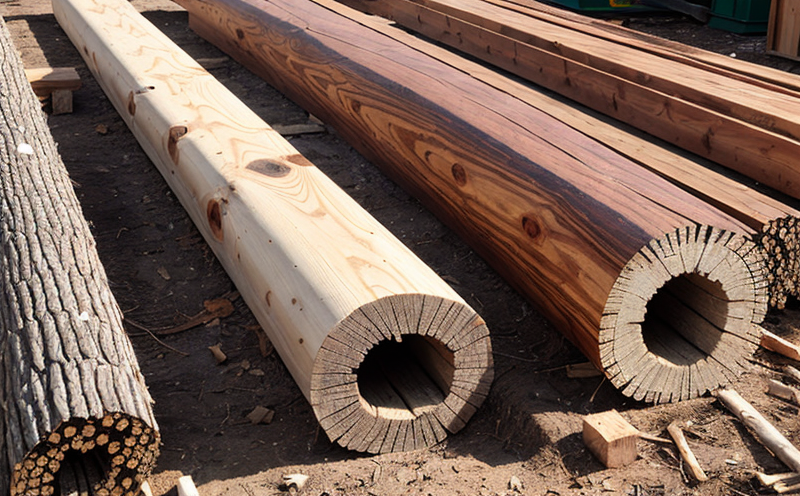Treated Wood Compression Strength Testing
The treated wood compression strength testing service is an essential part of ensuring the durability and longevity of wooden structures used in agriculture, forestry, and other sectors. This test measures the compressive strength of wood that has been chemically treated to enhance its resistance against moisture, fungi, insects, and other environmental factors.
The compression strength testing evaluates how a piece of treated wood can withstand pressure applied perpendicular to its grain direction. The results from this test are critical for ensuring compliance with international standards such as ISO 6003-1:2004 and ASTM D1982, which specify the procedures for determining the modulus of rupture (MOR) and compressive strength of wood.
The testing process involves preparing a specimen from treated wood according to specific dimensions laid out in the relevant standards. The sample is then placed in the compression testing machine, where it is subjected to gradually increasing pressure until failure occurs. The maximum load at which the sample fails provides an indication of its compressive strength.
Understanding the scope and methodology behind this test helps quality managers, compliance officers, R&D engineers, and procurement professionals make informed decisions about material selection and product development. By ensuring that treated wood meets these stringent standards, stakeholders can reduce maintenance costs and extend the life of their structures.
The customer impact from reliable compression strength testing is significant. It ensures safer and more durable products, enhances brand reputation through compliance with industry regulations, and supports long-term sustainability initiatives by reducing waste due to premature failure of treated wood products.
In terms of use cases, this service finds application in various sectors including agriculture, forestry, construction, and manufacturing. For instance, farmers may use treated lumber for building fences or shelters that need to withstand harsh weather conditions. Similarly, loggers might apply it when constructing temporary camps or equipment storage facilities.
| Use Cases | Description |
|---|---|
| Farm Structures | Building fences, shelters, and other agricultural infrastructure that must endure outdoor elements. |
| Forestry Operations | Constructing temporary camps or equipment storage areas in remote locations. |
| Bridges & Roadways | Enhancing the load-bearing capacity of wooden components used in road and bridge construction. |
| Manufacturing Facilities | Creating durable packaging materials for agricultural products that need to maintain integrity during transportation. |
Customer Impact and Satisfaction
Enhances product performance by ensuring treated wood can withstand expected stress levels without failing prematurely.
Supports regulatory compliance, reducing risks associated with non-conformance penalties or recalls.
Improves safety for end-users who rely on treated wood products for critical applications like farm equipment or construction materials.
Use Cases and Application Examples
In agriculture, treated wood is used in the fabrication of silage bins designed to store feed efficiently while resisting decay caused by moisture and microbial activity.
In forestry, it serves as a key component in the construction of portable workshops for loggers operating deep within forested areas where access roads are limited or non-existent.
For manufacturing facilities involved in food processing industries, treated wood provides robust packaging solutions that protect perishable goods during transit and storage.





